Comprehensive Guide to Animal and Insect Pest Management
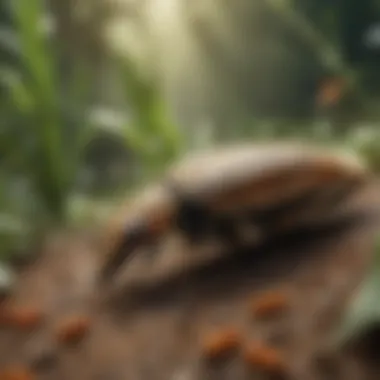

Intro
Pest management is a crucial subject for homeowners and housewives alike. Understanding the dynamics of pests, both animals and insects, can lead to effective strategies for control and prevention. This guide delves into the intricacies of pest management, examining how to identify pests, recognizing their life cycles, and exploring various control methods. With an emphasis on eco-friendly solutions, this article aims to empower readers with knowledge for managing pests effectively.
Understanding the Pest
Gaining knowledge about pests begins with knowing what they are and how they behave. Pest identification is a vital first step in the management process. Recognizing a pest is essential for determining the appropriate control measures. Different pests require different strategies—what works for a flea (Ctenocephalides) might not work for a mouse (Mus musculus).
Identification
Identification involves observing physical characteristics such as size, color, and shape. Additionally, understanding a pest's behavior is key to tracking its movements and identifying its nesting and feeding habits.
Consider the following signs for common pests:
- Termites: Swarmers or mud tubes.
- Rodents: Droppings or gnaw marks.
- Ants: Trails leading to food sources.
Life Cycle
A pest's life cycle determines how quickly it can reproduce. For example, a cockroach can lay multiple eggs at one time, leading to rapid population growth. Knowing the stages of a pest’s life cycle helps in timing treatment effectively. Generally, most insects go through four main stages: egg, larva, pupa, and adult.
Pest Prevention Strategies
Preventing pests can save time and effort in the long run. An effective prevention strategy includes altering the environment to make it less conducive to pests.
Environment Modification
Modify your surroundings to eliminate areas where pests thrive. Steps to consider include:
- Ensure proper waste management.
- Seal cracks or holes in walls and foundations.
- Keep food in sealed containers.
Changing your landscape can also deter pests. For instance, keeping shrubs trimmed and not letting mulch pile up can help prevent rodent infestations.
Physical Barriers
Physical barriers serve as a means to obstruct pests from entering a home. Examples include:
- Installing screens on windows and doors.
- Using caulks and sealants to block entry points.
- Employing traps for rodents or insects.
Control Methods
When prevention fails, control methods become necessary. These can be categorized into chemical and biological control options.
Chemical Control
Chemical control often involves the use of pesticides and insecticides. If you decide to use chemicals, it’s crucial to follow the manufacturer’s instructions thoroughly. Consider using safer alternatives, such as essential oils or boric acid, which have lower toxicity.
Biological Control
Biological control utilizes natural predators to manage pest populations. Introducing beneficial insects like ladybugs (Hippodamia) can help control aphid populations. This method is often more sustainable, minimizing chemical usage and promoting ecological balance.
It's important to consider the ecological impact of pest control measures. Emerging techniques in integrated pest management take a holistic approach to control, blending traditional methods with innovative solutions.
Prolusion to Pest Management
Pest management is a vital aspect of maintaining both residential and commercial environments. Proper understandig of this subject can lead to healthier living conditions and enhanced quality of life. Creating an effective pest management plan requires both knowledge of the types of pests and the methods for control. With the increasing concern over health and environmental impacts, the significance of pest management is more pronounced than ever.
Importance of Pest Control
Pest control plays a crucial role in public health, agriculture, and the economy. Pests can transmit diseases, cause damage to crops, and threaten various structures. For instance, rodents are known to carry diseases like hantavirus and leptospirosis, which can affect humans. Managing these pests not only prevents potential health risks but also protects food supply and residential integrity.
Utilizing one of the pest management methods can help mitigate these risks and is essential for maintaining a balanced ecosystem. Failure to control pest populations can lead to outbreaks, resulting in more extensive damage and higher costs associated with rectification efforts. Thus, understanding the importance of pest control allows homeowners to approach the issue with greater awareness and proactivity.
Overview of Pest Categories
Pests can be classified into several categories, each presenting unique challenges and require distinct approaches for management. Understanding these categories is significant for effective pest control and maintaining healthy living spaces.
Animal Pests
Animal pests include a wide range of species such as raccoons, squirrels, and pigeons. They often invade homes looking for food or shelter. One key characteristic of animal pests is their ability to adapt quickly to urban environments, making them resilient to removal efforts.
Animal pests pose not only property damage but also potential health risks due to their feces and the parasites they carry. Addressing their presence with a focus on methods that discourage their return is critical. It may involve exclusion techniques alongside environmental modifications, making it a practical choice for homeowners.
Insect Pests
Insect pests, including termites, ants, and cockroaches, are another major category. These pests can infest homes and lead to serious damage or health issues. A standout feature of insect pests lies in their reproductive capabilities; a small number can quickly become an infestation.
Insect pests often require more intricate management strategies. This includes identifying the specific species and understanding their behavior and habitat preferences. This category is vital to address because insects can multiply rapidly, and their control often necessitates specialized techniques or products, which homeowners must understand well.
Rodent Pests
Rodent pests such as mice and rats are significant concerns for homeowners. They thrive in diverse environments and are known for their voracious feeding and nesting habits. The behavior of rodent pests includes rapid reproduction, often leading to sudden population surges if not managed effectively.
The importance of understanding rodent pests is clear—they can compromise food supplies, damage structures, and expose residents to diseases. Employing preventive measures, such as sealing entry points and maintaining cleanliness, is crucial for minimizing their presence. Successful rodent control directly correlates with the methodology employed and the homeowner’s engagement in the process.
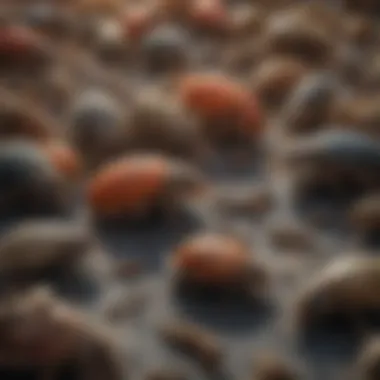

The key to effective pest management lies in recognizing the specific types of pests and employing techniques that address their unique behaviors and ecological roles.
Identifying Common Pests
Identifying common pests is critical for effective pest management. Recognizing the specific characteristics and behaviors of both animal and insect pests allows property owners and pest control professionals to develop targeted strategies. Understanding the nuances of each pest can lead to better prevention and control methods. The sooner pests are identified, the quicker and more efficiently they can be addressed before they cause significant damage or health risks.
Characteristics of Animal Pests
Behavioral Patterns
Behavioral patterns of animal pests play a key role in understanding their impact on the environment and property. These patterns determine how pests interact with their surroundings, food sources, and potential threats. One key characteristic is the nocturnal activity of many pests, such as raccoons or opossums. This behavior makes them less likely to be seen during the day, complicating identification efforts. It is beneficial to be aware of these patterns as they can guide surveillance times and techniques. Another unique feature is the nesting habits of rodents, which often leads them to invade homes. Recognizing these patterns can lead to timely interventions that prevent infestations.
Habitat Preferences
Habitat preferences influence where animal pests are likely to thrive and establish themselves. For example, deer prefer woodlands and open fields near water sources, while squirrels commonly inhabit trees and attics. This key characteristic is important because it dictates pest control strategies. Awareness of these habitats can help in effectively identifying potential pest entry points and breeding areas. One unique feature of these preferences is how they often align with urban developments. As nature intersects with human habitats, pests might increasingly invade homes. Property owners must therefore understand these tendencies to mitigate risks and establish control measures.
Identifying Insect Pests
Physical Characteristics
The study of the physical characteristics of insects is essential in identifying specific pest species. This includes features like body shape, color, and size. A key characteristic to consider is the distinction between beneficial insects, such as ladybugs, and harmful pests like aphids. Proper identification can lead to the application of the right control measures. One unique feature of insect identification is the use of taxonomic keys, which can clarify complicated classifications. However, reliance on physical traits may lead to misidentification, emphasizing the need for careful observation and sometimes expert consultation.
Signs of Infestation
Signs of infestation provide critical clues in the identification process. Common indicators include droppings, damaged structures, and unusual sounds. The key characteristic is the immediacy of action; recognizing these signs early can prevent greater damage and infestation. For example, the presence of frass indicates a wood-boring insect that needs immediate attention. The unique feature of these signs is their ability to guide you even if the pest is not directly seen. However, not all signs point to the same pest, which requires thorough analysis to reach proper conclusions about subsequent pest management strategies.
Identifying common pests requires a careful and systematic approach. With knowledge of the behavioral patterns and habitat preferences of animal pests, along with the physical characteristics and signs of insect infestations, property owners can equip themselves with the tools necessary to manage and control pest populations effectively.
"The sooner pests are identified, the quicker and more efficiently they can be addressed."
Behavioral Patterns of Pests
Understanding the behavioral patterns of pests is crucial in developing effective management strategies. These behaviors not only dictate how pests interact with their environment but also influence their lifecycle and feeding habits. Recognizing the behavior of both animal and insect pests can lead to better management outcomes. For homeowners and pest control professionals alike, this knowledge is the foundation of effective planning, intervention, and prevention efforts.
Feeding Habits of Animal Pests
Animal pests, such as raccoons, deer, and various rodents, exhibit distinct feeding habits that vary greatly by species. Many animal pests are opportunistic feeders, which means they will consume whatever food sources are readily available.
- Diet Diversity: Feeding habits range from herbivorous to carnivorous. For example, rodents often prefer seeds, while raccoons may eat fruits, insects, and human food waste. By understanding what specific pests eat, it becomes easier to determine effective control methods.
- Feeding Time: Various pests have different feeding patterns. Nocturnal pests, like raccoons and opossums, usually forage at night. This makes trapping and exclusion methods more challenging if not timed correctly.
- Habitat Influence: The feeding habits of pests can also be influenced by their habitat. For instance, urban areas may draw raccoons or squirrels to easily accessible human food, whereas rural areas may see more pest activity in agricultural settings where crops are the primary food source.
Recognizing these elements can assist in choosing appropriate control measures, such as baiting strategies or preventative habitat changes that limit food availability.
Reproductive Behavior of Insects
Insects display a wide variety of reproductive behaviors that have significant implications for pest management. Understanding these behaviors helps in forecasting pest populations and designing interventions that can mitigate infestations.
- Mating Rituals: Many insects engage in complex mating rituals that can include visual displays, pheromone signaling, or sounds. For instance, male crickets serenade females with their songs, which can help identify areas of infestation.
- Reproductive Rate: Insects generally have high reproductive rates. A single female can lay hundreds or thousands of eggs in her lifetime. Understanding this can prompt timely responses before a small pest problem escalates into a larger infestation.
- Lifecycle Stages: Many insects have distinct life stages, from egg to larvae to adult. Each stage requires different approaches for effective management. For example, targeting larvae may require different strategies than targeting adults.
Incorporating knowledge of insect reproductive behavior into pest management strategies can significantly impact success rates. Awareness and early intervention are key.
Integrated Pest Management (IPM)
Integrated Pest Management, often referred to as IPM, represents a holistic approach to pest control. This method prioritizes the use of knowledge about pest life cycles, behaviors, and ecological interactions. The significance of IPM in pest management cannot be underestimated. By blending various control methods, IPM seeks to minimize reliance on chemical pesticides while still effectively managing pest populations.
One of the main benefits of IPM is its focus on sustainability. IPM aims to reduce the environmental impact that traditional pest control methods may have. It also emphasizes the understanding of the pest's ecology, which leads to more informed control strategies. In this article, we will explore the principles of IPM and discuss how they influence pest control decisions.
Definition and Principles of IPM
Integrated Pest Management is defined as a multifaceted approach designed to manage pest populations at acceptable levels while minimizing potential risks to people, property, and the environment. The primary principles of IPM include:
- Monitoring: Continuously observing pest populations and their impacts.
- Identification: Determining the species and lifecycle of pests present.
- Control: Implementing a combination of control strategies based on observation and identification results.
Steps in Implementing IPM
Implementing IPM involves several critical steps that ensure a systematic approach to managing pests effectively.
Monitoring and Assessment
Monitoring and assessment play a vital role in pest management. Regular observation helps in understanding pest populations, their behaviors, and their environmental triggers. This process is essential for timely interventions. The key characteristic of monitoring is its informational basis; it allows for data-driven decisions. Such a feature distinguishes this method from reactive pest control approaches that may lead to unnecessary chemical usage.
Furthermore, monitoring practices can include setting up traps or the use of digital devices to identify pest presence. The advantage of this is clear; it not only limits risks associated with pesticides but also promotes a more environmentally-friendly approach. However, one disadvantage can be the initial time investment required to establish an effective monitoring system.
Control Methods Selection
Control methods selection involves evaluating and choosing appropriate strategies to address pest issues based on the collected data. The critical element of this step is strategic choice, as it truly defines the effectiveness of the pest management plan. This method ensures that control measures are suitable for the specific pests and context.
One unique aspect of control methods selection is the balance it strikes between chemical and non-chemical options. This flexibility allows managers to adapt their strategies to fit specific situations. The advantage of this approach is its efficacy; however, some may find it challenging to stay updated on emerging control methods, which demand ongoing education and adaptation.
Evaluation of Effectiveness
Evaluation of effectiveness assesses the results of the implemented pest control strategies. This step is crucial to determine the success of the overall IPM plan. The characteristic that stands out here is performance measurement. Evaluating effectiveness ensures that the chosen methods are not just implemented but are also achieving the desired results.
A distinguishing feature of evaluating strategies is its component feedback loop. This allows improvements to be made continuously based on previous outcomes, leading to refined pest management strategies over time. One of the advantages of this approach is that it establishes a basis for learning and improvement. Conversely, there can be challenges in quantifying effectiveness when biological variables are unpredictable.
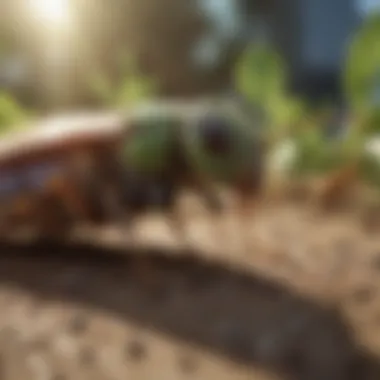
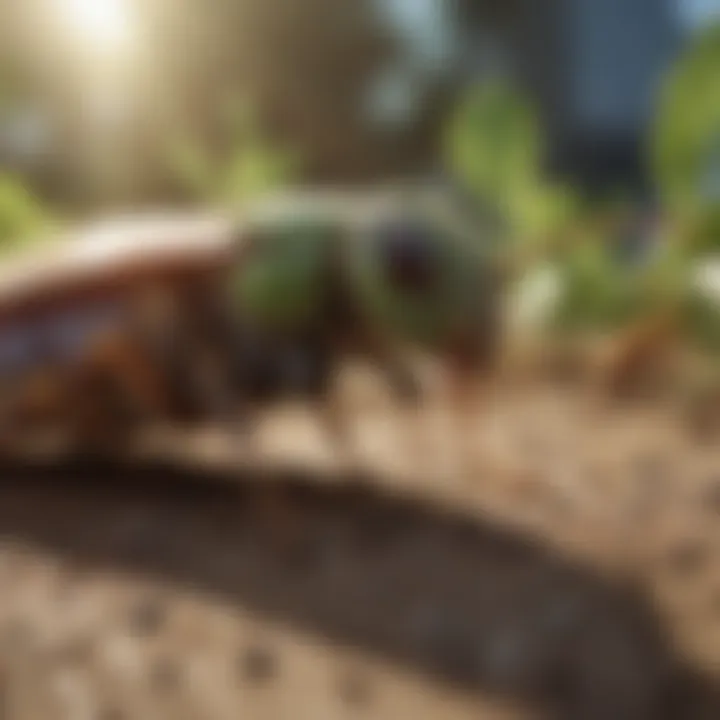
“A successful pest control approach not only resolves existing issues but also lays groundwork for future prevention.”
By taking these steps, integrated pest management aligns with both practical outcomes and ecological responsibility. This balanced methodology is essential for homeowners and professionals alike, ensuring sustainable pest control solutions.
Traditional Pest Control Methods
Traditional pest control methods serve as foundational practices that have been utilized for generations. Understanding these methods is crucial for homeowners looking to effectively manage pests while considering the implications of their choices. These methods are often easier to access and apply at a small scale, making them particularly relevant for housewives and homeowners. In an evolving world where eco-friendliness is vital, traditional methods can offer low-cost options suitable for maintaining a pest-free environment.
Chemical Control Approaches
Chemical control remains one of the most widely recognized pest management strategies. These methods involve the use of pesticides to eliminate or mitigate pest populations. It is vital to choose the right product, depending on the particular pest targeted. Some common types of chemical control methods include:
- Insecticides: Target insect pests directly. Brands such as Ortho and Raid offer a variety of options for different insects.
- Herbicides: Useful for controlling unwanted plant pests, thus preserving gardens and landscapes. Roundup is a common choice in this category.
- Rodenticides: Applied to manage rodent populations. Products like Tomcat are popular in this domain.
While effective, the use of chemical approaches necessitates careful consideration of health and environmental impacts. Homeowners should always read labels to understand application techniques, safety precautions, and toxicity levels.
Moreover, chemical control should be viewed as a part of an integrated pest management (IPM) strategy. This incorporates other methods in a balanced approach that minimizes risks to humans and the environment.
Mechanical Control Techniques
Mechanical control techniques are often referred to as physical pest control measures, as they do not rely on chemicals or biological agents. These approaches can provide immediate relief from pest disturbances. Some effective methods include:
- Traps: Utilization of snap traps for rodents or sticky traps for insects can effectively reduce pest populations. Devices like Victor Snap Traps are widely used and can be found in most stores.
- Barriers: Installing screens, nets, or using caulking can prevent pests from entering homes. This is particularly relevant for minimizing insect access through doors and windows.
- Handpicking: For some insects, simply removing them by hand can be effective. This is especially applicable for larger pests in gardens, such as caterpillars or beetles.
An important aspect of mechanical methods is their safety. They typically do not pose a risk to non-target species or human health when implemented correctly. They can also be highly effective in both the short and long term, reducing pest numbers without adverse effects on the environment.
In summary, traditional pest control methods play a pivotal role in maintaining pest-free homes. Chemical approaches offer efficiency, but carry certain risks. Meanwhile, mechanical techniques provide reliable alternatives without environmental harm. Homeowners should explore these various options to identify what works best for their specific situations.
"Ultimately, combining multiple strategies often yields the best results for pest management."
Careful implementation of these techniques will lead to effective pest control and enhance the overall quality of living spaces.
Eco-Friendly Pest Control Solutions
Eco-Friendly Pest Control Solutions refer to methods that prioritize environmental safety while managing pest populations. The significance of this approach lies in its ability to minimize ecological impact while effectively controlling pests. Today, more homeowners are inclined towards these strategies due to growing concerns about chemicals and their unintended effects on non-target species, human health, and the environment at large. Eco-friendly methods encompass a range of techniques, including biological control, cultural practices, and sustainable management strategies. These solutions not only tackle pest problems but also promote biodiversity and ecosystem resilience.
Biological Control Methods
Biological control methods utilize natural means to manage pest populations. This is accomplished primarily through the introduction or encouragement of beneficial organisms that prey on or compete with pests. This approach reduces reliance on synthetic chemicals, aligning with sustainable practices. The key characteristic of biological control is its focus on utilizing the natural enemies of pests, such as insects, fungi, or bacteria.
The Role of Beneficial Insects
Beneficial insects, such as ladybugs and lacewings, play a vital role in maintaining a balance in ecosystems. They naturally control pest populations by feeding on aphids, mites, and other harmful species. This method of pest management is beneficial because it allows ecosystems to remain intact without chemical interference. One unique feature is that beneficial insects can reproduce and sustain their populations, creating a long-term pest management solution. However, relying solely on this method might require time to establish these populations, possibly leading to delays in pest control effectiveness.
Natural Predators
Natural predators, which include birds, bats, and certain insects, are essential contributors to pest management. These organisms help keep pest populations in check, thereby preventing outbreaks that can lead to significant damage to crops and structures. A key characteristic is that they often require no human intervention to thrive once established in an environment. Utilizing natural predators is highly regarded because it enhances the natural biodiversity of the ecosystem. The main disadvantage is that their effectiveness is highly dependent on the habitat's overall health and may not always be consistent in controlling larger pest populations.
Cultural Control Practices
Cultural control practices involve altering agricultural or household practices to prevent pest establishment and proliferation. This includes strategies such as crop rotation and habitat management, which reduce pest habitats and disrupt their life cycles. Emphasizing cultural control is beneficial due to its preventative nature, as it addresses root causes rather than merely reacting to infestations.
Crop Rotation Strategies
Crop rotation strategies involve regularly changing the type of crops grown in a particular area. This practice interrupts pest cycles, as many pests are specialists that thrive on specific plants. A significant advantage of this method is that it helps enhance soil health and fertility, contributing to more robust plant growth. However, a potential downside is that it requires careful planning and knowledge of pest phenology and crop relationships. Mismanagement of crop rotation schedules can lead to ineffective pest control or other agricultural issues.
Sanitation and Habitat Management
Sanitation and habitat management focus on removing or altering conditions that attract pests. This involves maintaining cleanliness and proper waste disposal in both indoor and outdoor spaces. An essential characteristic of sanitation is that it directly reduces food and shelter availability for pests. This method is particularly beneficial because it can be easily incorporated into daily routines, thereby ensuring consistent pest control. The downside might include the necessity for ongoing effort and monitoring, making it less favorable for those seeking immediate solutions.
Advanced Pest Control Technologies
Advanced Pest Control Technologies play a crucial role in the evolution of pest management strategies. As traditional methods continue to face challenges, these modern technologies provide innovative solutions to effectively control and monitor pest populations. The integration of technology in pest management not only improves the efficiency of control measures but also enhances the accuracy of pest identification, intervention, and monitoring.
These technologies offer several benefits, including:
- Enhanced precision in targeting specific pest species.
- Reduction in the use of harmful chemicals, leading to environmental benefits.
- Real-time data collection, providing insights into pest behaviors and effectiveness of control measures.
- Greater accessibility for homeowners and professionals alike, making pest management more user-friendly.
As the demand for sustainable solutions increases, these technologies represent a significant shift towards more effective and environmentally responsible pest management practices.
Smart Traps and Monitoring Devices
Smart traps and monitoring devices are an integral component of advanced pest management technologies. They utilize sensors and data analysis to track pest activity and behavior in real-time. This enables timely interventions and reduces the reliance on traditional pesticides. Homeowners can benefit significantly from using smart traps, as they provide valuable data on pest populations and patterns.
The advantages of smart traps include:
- Automated monitoring: Reduced need for frequent manual checks.
- Improved accuracy: Sensors allow for precise detection of pest presence, minimizing false alarms.
- Data analysis: Collected data helps in identifying trends and making informed decisions about pest control.
Thus, smart traps are increasingly favored in modern pest control strategies for their ability to facilitate proactive management and reduce pest-related issues effectively.
Genetic Control Strategies
Genetic Control Strategies represent a groundbreaking approach to pest management by leveraging the principles of genetics to suppress pest populations. This strategy focuses on modifying pest organisms in a way that either reduces their ability to reproduce or makes them less viable in the environment.
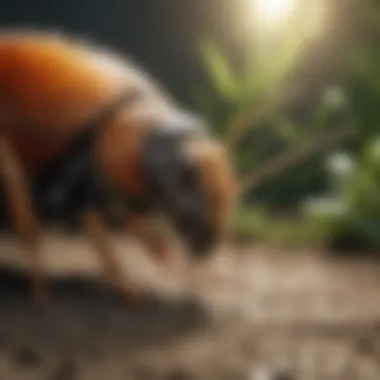

Sterile Insect Technique
The Sterile Insect Technique is a notable genetic control method that involves releasing sterilized male insects into the wild. This method aims to reduce pest populations through mating disruption, where sterilized males mate with females but do not produce viable offspring.
Key characteristics of the Sterile Insect Technique include:
- Non-toxic approach: It does not rely on chemical pesticides, making it environmentally friendly.
- Species-specific: It targets selected pest species without harming beneficial insects.
One significant advantage of this technique is its effectiveness in controlling certain agricultural pests, leading to improved yields. However, some challenges include the need for precise and extensive sterilization processes, which can be resource-intensive.
Gene Editing Applications
Gene Editing Applications utilize advanced technologies, such as CRISPR, to modify specific genes in pest species. This can include altering traits that contribute to survival and reproduction. The application of gene editing in pest management presents a forward-looking solution to combat various pest challenges effectively.
Key characteristics of Gene Editing Applications include:
- Precision targeting: Allows for specific changes in the pest genome, minimizing unintended effects on non-target organisms.
- Rapid results: Gene editing can produce significant changes in pest populations within a short period.
The unique features of gene editing techniques offer many potential advantages, such as enhanced pest control efficiency and reduced chemical use. Yet, ethical concerns around genetic modification and its long-term ecological impacts must be thoroughly considered.
"The integration of novel technologies like Sterile Insect Technique and Gene Editing Applications signifies a promising future in pest management, where ecological balance can be maintained while ensuring agricultural productivity."
Legal and Ethical Considerations in Pest Management
Understanding the legal and ethical dimensions of pest management is critical in today's society. Pests can cause harm to human health and the environment, yet how we manage these pests can have significant repercussions. The importance of navigating these considerations lies in safeguarding both public welfare and ecological integrity. Therefore, pest management should not only be effective but should also adhere to various legal standards and ethical norms. This section elucidates the significance of these frameworks in guiding responsible pest management practices.
Regulatory Frameworks and Policies
Regulatory frameworks establish the boundaries and guidelines within which pest management must operate. These laws are designed to protect human health, agricultural interests, and environmental resources. Various bodies, such as the Environmental Protection Agency (EPA) in the United States, set regulations regarding pesticide use and application methods.
The essence of these regulations includes:
- Safety Standards: Ensuring that pest control measures are safe for humans and non-target species.
- Approval Processes: Prospective pest control products must undergo rigorous testing before being sold to the public.
- Use Restrictions: Certain chemicals can only be applied under specific conditions to minimize environmental impact.
- Reporting and Compliance: Pest control operators must maintain records of chemical use and follow mandated protocols.
Local laws may vary, making it essential for homeowners and professionals to familiarize themselves with the specific regulations that apply to their areas. This awareness not only helps in legal compliance but also supports informed decision-making when choosing pest management solutions.
Ethical Implications of Pest Control
The ethical considerations in pest management invoke questions about the balance between human needs and ecological health. Pests are often viewed through a negative lens, but they play integral roles in ecological systems. Thus, the ethical approach emphasizes a humane and considered method of management.
Key ethical implications include:
- Welfare of Non-target Species: Effective pest management should consider the impact on beneficial organisms and the broader ecosystem.
- Humane Treatment: When dealing with animal pests, methods should minimize suffering. This involves critiquing inhumane extermination methods and advocating for more humane alternatives.
- Sustainability: Long-term solutions should focus on sustainable practices rather than short-lived, chemical-heavy interventions.
- Community Impacts: Pest management should consider community health and safety, especially in densely populated areas.
Pest management strategies should strive to be socially responsible, harmonizing human activities with the needs of wildlife and the environment.
Future Trends in Pest Management
Understanding the future trends in pest management is crucial for both homeowners and professionals. As the field advances, new strategies and technologies emerge that promise to improve pest control effectiveness while minimizing environmental impacts. Keeping informed about these trends allows for proactive adaptation, ensuring that practices remain relevant and efficient.
Technological Innovations
Technological advancements play a key role in pest management. Precision agriculture, for instance, utilizes data analytics for targeting pest control interventions. By employing sensors and drones, homeowners can monitor pest populations more accurately. This targeted approach reduces chemical usage, thereby benefiting both the environment and human health.
In addition to precision agriculture, smart traps are gaining popularity. These devices automatically capture pests and send real-time data regarding infestation levels. Technologies like Artificial Intelligence (AI) are integrated into pest management systems, enhancing decision-making processes. AI can analyze data and predict pest behavior, allowing for timely intervention and optimized resources.
Sustainability in Pest Management
Sustainability has become a fundamental consideration in pest management strategies. The goal is to achieve a balance between pest control and environmental conservation. Eco-friendly methods are not only better for the planet but also provide long-term solutions for pest problems.
Practices such as integrated pest management (IPM) promote sustainable approaches by combining various control methods. These may include biological controls, cultural practices, and habitat management techniques. For instance, utilizing beneficial insects can control pest populations naturally, reducing reliance on chemical pesticides.
Additionally, educating homeowners about sustainable practices is essential. Encouraging proactive measures such as sanitation and proper waste management can prevent infestations before they arise. Simple actions like maintaining gardens and reducing standing water around properties can minimize attractive habitats for pests.
Sustainable methods help reduce the negative environmental impacts of pest control, providing lasting solutions for future challenges.
By focusing on sustainability and technological innovations, pest management is evolving. Homeowners can adapt to these changes, ensuring effective pest control in a responsible manner. Adopting these future trends will not only improve pest management efforts but also contribute to healthier living environments.
Epilogue
The conclusion of this comprehensive guide on animal and insect pest management serves as a vital juncture to reflect on the importance of effective pest management practices. This topic interconnects with various aspects of our daily lives, from sustaining ecological balance to ensuring health and safety within our homes. Understanding the significance of these management practices can lead to more informed decisions by homeowners and pest control professionals alike.
Summary of Key Points
Throughout this article, we have explored several foundational topics essential to managing pests effectively. First, we discussed the importance of pest control and its role in achieving a safe and harmonious living environment. The article provided insight into the various categories of pests, including animal, insect, and rodent pests, illustrating their unique behaviors and habitats.
Moreover, we delved into identification techniques for common pests, focusing on physical characteristics and signs of infestation. The behavioral patterns, such as feeding habits and reproductive behaviors, were thoroughly examined to emphasize how understanding these aspects facilitates better control strategies.
The section on Integrated Pest Management (IPM) highlighted the necessity for a multifaceted approach while taking environmental and health impacts into account. We further explored traditional pest control methods alongside eco-friendly solutions, emphasizing the growing need for sustainable practices in pest management. Lastly, we discussed future trends, underscoring the continuous advancements in technology and sustainable practices that can shape the future of pest management.
Call for Continued Research
As we conclude, it is imperative to emphasize that pest management is not a static field; rather, it requires ongoing research and development. The ecological implications of various control methods necessitate a deeper exploration into safe and effective pest management solutions. This ongoing quest for knowledge is crucial for advancing practices that minimize harm to the environment while protecting human interests.
Research topics could include:
- Emerging biological control methods
- The impact of urbanization on pest populations
- Development of new eco-friendly pesticides
- Innovations in pest detection technology
By actively supporting and engaging in research, individuals and stakeholders can contribute to more effective and sustainable pest management practices. This continuous evolution of knowledge will ultimately lead to safer homes and a healthier ecosystem.







